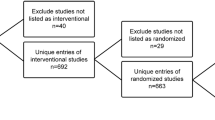Abstract
The goal of this manuscript is to introduce a framework for consideration of designs for population pharmacokinetic orpharmacokinetic–pharmacodynamic studies. A standard one compartment pharmacokinetic model with first-order input and elimination is considered. A series of theoretical designs are considered that explore the influence of optimizing the allocation of sampling times, allocating patients to elementary designs, consideration of sparse sampling and unbalanced designs and also the influence of single vs. multiple dose designs. It was found that what appears to be relatively sparse sampling (less blood samples per patient than the number of fixed effects parameters to estimate) can also be highly informative. Overall, it is evident that exploring the population design space can yield many parsimonious designs that are efficient for parameter estimation and that may not otherwise have been considered without the aid of optimal design theory
Similar content being viewed by others
References
H.C. Kimko S.B. Duffull (2003) Simulation for Designing Clinical Trials Vol 127 Marcel Dekker New York
M.K. Al-Banna A.W. Kelman B. Whiting (1990) ArticleTitleExperimental design and efficient parameter estimation in population pharmacokinetics J. Pharmacokinet. Biopharm 18 347–360 Occurrence Handle10.1007/BF01062273 Occurrence Handle2231324 Occurrence Handle1:STN:280:By6D3sfnslY%3D
E.N. Jonsson J.R. Wade M.O. Karlsson (1996) ArticleTitleComparison of some practical sampling strategies for population pharmacokinetic studies J. Pharmacokinet Biopharm 24 245–263 Occurrence Handle8875349 Occurrence Handle1:STN:280:ByiD38bjtlM%3D
F. Mentre A. Mallet D. Baccar (1997) ArticleTitleOptimal design in random-effects regression models Biometrika 84 IssueID2 429–442 Occurrence Handle10.1093/biomet/84.2.429
S. Retout S. Duffull F. Mentre (2001) ArticleTitleDevelopment and implementation of the population Fisher information matrix for the evaluation of population pharmacokinetic designs Comput. Meth. Prog. Biomed 65 IssueID2 141–51 Occurrence Handle1:STN:280:DC%2BD3M7os12htA%3D%3D
S. Retout F. Mentre (2003) ArticleTitleFurther developments of the Fisher information matrix in nonlinear mixed effects models with evaluation in population pharmacokinetics J. Biopharm. Stat 13 209–227 Occurrence Handle10.1081/BIP-120019267 Occurrence Handle12729390
B. Green S.B. Duffull (2003) ArticleTitleProspective evaluation of a D-optimal designed population pharmacokinetic study J. Pharmacokinet. Pharmacodyn 30 IssueID2 145–161 Occurrence Handle10.1023/A:1024467714170 Occurrence Handle12942685 Occurrence Handle1:CAS:528:DC%2BD3sXms1yhtLs%3D
D.Z. D′Argenio (1981) ArticleTitleOptimal sampling times for pharmacokinetic experiments J. Pharmacokinet. Biopharm. 9 739–56 Occurrence Handle7341758 Occurrence Handle1:STN:280:Bi2C1M3htVc%3D
A.C. Atkinson A.N. Donev (1992) Optimum Experimental Designs Clarendon Press Oxford
S. Retout F. Mentre (2003) ArticleTitleOptimization of individual and population designs using Splus J. Pharmacokinet. Pharmacodyn. 30 IssueID6 417–443 Occurrence Handle10.1023/B:JOPA.0000013000.59346.9a Occurrence Handle15000423
S.B. Duffull S. Retout F. Mentre (2002) ArticleTitleThe use of simulated annealing for finding optimal population designs Comput. Meth. Prog. Biomed 69 IssueID1 25–35
T. H. Waterhouse, S. Redman, S. B. Duffull, and J. A. Eccleston. Optimal design for model discrimination and parameter estimation for itraconazole population pharmacokinetics. J. Pharmacokinet. Pharmacodyn. (2005), In press.
S.B. Duffull F. Mentre L. Aarons (2001) ArticleTitleOptimal design of a population pharmacodynamic experiment for ivabradine Pharm Res 18 IssueID1 83–89 Occurrence Handle10.1023/A:1011035028755 Occurrence Handle11336357 Occurrence Handle1:CAS:528:DC%2BD3MXjtFajt74%3D
D.Z. D′Argenio (1990) ArticleTitleIncorporating prior parameter uncertainty in the design of sampling schedules for pharmacokinetic parameter estimation experiments Math. Biosci 99 105–118 Occurrence Handle2134510 Occurrence Handle1:STN:280:By2C1MbntF0%3D
M. Tod J.M. Rocchisani (1997) ArticleTitleComparison of ED, EID and API criteria for the robust optimization of sampling times in pharmacokinetics J. Pharmacokinet. Biopharm 25 515–537 Occurrence Handle9561492 Occurrence Handle1:CAS:528:DyaK1cXis1Ojsbw%3D
T.H. Waterhouse J.A. Eccleston S.B. Duffull (2003) On optimal design for discrimination and estimation University of Queensland Brisbane
Author information
Authors and Affiliations
Corresponding author
Rights and permissions
About this article
Cite this article
Duffull, S., Waterhouse, T. & Eccleston, J. Some Considerations on the Design of Population Pharmacokinetic Studies. J Pharmacokinet Pharmacodyn 32, 441–457 (2005). https://doi.org/10.1007/s10928-005-0034-2
Received:
Accepted:
Issue Date:
DOI: https://doi.org/10.1007/s10928-005-0034-2




